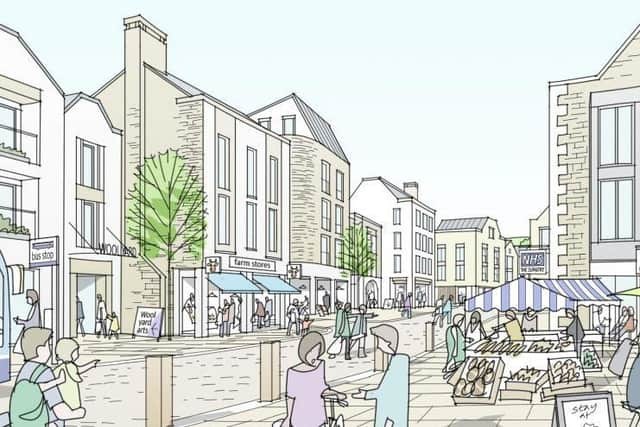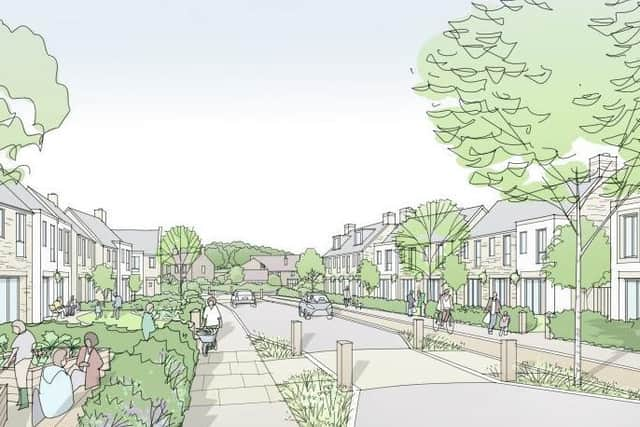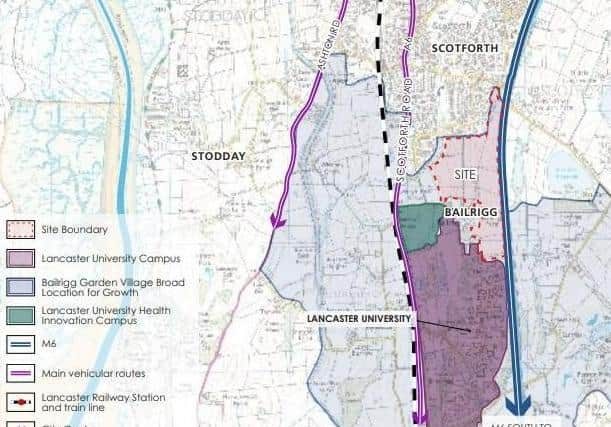Lancaster group's concern over 5,000 homes plan for Bailrigg Garden Village
and live on Freeview channel 276
Lancaster Vision have raised concerns about the scale and density of the development and say this will lead to the development becoming a more urbanised environment than the original vision suggested.
The group's views follow a presentation by planners JTP of the emerging masterplan for Bailrigg Garden Village earlier this month.
Advertisement
Hide AdAdvertisement
Hide AdMaster planners JTP were appointed by Lancaster City Council to work collaboratively with the community, relevant organisations, landowners and prospective developers on the creation of a masterplan for Bailrigg Garden Village.


Lancaster Vision is a sub group of Lancaster Civic Society, and was formed in 2012 by members who identified the need for an organisation to help secure a better future for the city and its surrounding.
And chairman James Wilkie, who is also the honorary secretary of Lancaster Civic Society, said that while the group is impressed with the thoroughness of the analysis of the site and how the proposed development would be sited, the group has a number of concerns.
He said there is particular concern that the extent of the garden village has moved beyond the boundaries of the approved Local Plan Policy SG1, which suggests a figure of around 3,500 houses.
Advertisement
Hide AdAdvertisement
Hide Ad"The presentation stated that the site would accommodate 5,000 dwellings," Mr Wilkie said. "This is the first time we have seen this figure articulated and believe it to be too high.


"The original expression of interest submitted by the city council identified a figure of 3,000 dwellings, and paragraph 12.18 of the Strategic Policy and Land Allocations DPD states: 'The broad location for growth has identified opportunities to deliver in the region of 3,500 new homes, 1,205 of which the council believes can be realistically delivered during the course of this plan period up to 2034, due to the strategic infrastructure required to facilitate growth'.
"This increase in housing numbers to 5,000 coupled with a proposal that only 35 per cent of the site be developed has resulted in a requirement of densities of up to 80 dwellings per hectare [dph] on parts of the site.
"Lancaster Vision believes that this will result in a much more urbanised environment than the original vision suggested.
Advertisement
Hide AdAdvertisement
Hide Ad"Lancaster Vision also believe that the acceptance of densities of up to 80dph will also comprise the provision of adequate garden space for individual dwellings. This would be regrettable given the experience of the pandemic which has highlighted the vital importance of access to adequate private garden space.


"Lancaster Vision can see no need or justification for the increase to a figure of 5,000 when the local plan set a figure 'in the region of 3,500' and we believe that this will compromise the vision the garden village originally aspired to."
Lancaster Vision has also previously emphasised the need to provide reassurance to those concerned that the new development will exacerbate the dangers of flooding to adjacent areas, and said no reference was made in the presentation to what measures will be taken to respond to this concern.
A copy of the latest presentation by the architects JTP of the Emerging Masterplan for Bailrigg Garden Village can be viewed online here.JTP are expecting to submit their final masterplan to Lancaster City Council next month.
Advertisement
Hide AdAdvertisement
Hide AdCoun Janice Hanson, cabinet member with responsibility for economic regeneration and planning for Lancaster City Council, said: “The Local Plan sets out a strong vision for the future of our district that will allow the economy to thrive and prosper. Its purpose is to allocate land for new housing and employment, while also serving as a check on inappropriate development that is not in accordance with the policies it sets out.


“It also ensures that development proposals meet the needs of the district and that critical elements, such as new infrastructure, come forward in the right place at the right time.
“The new Local Plan identified only a broad location for growth for the Bailrigg Garden Village, land to the south of Lancaster, and anticipated that at least 3,500 new homes would be built. However, it is only through undertaking the masterplanning work that the amount of development that could happen here can be better understood.
“The masterplan is also exploring a Garden Village layout that is designed to allow for the continued development of a successful new community in the future. This will ensure that a Garden Village planned now will have room to grow to meet potential housing needs in the future.
Advertisement
Hide AdAdvertisement
Hide Ad“With regard to flooding, Lancaster Vision can be assured that the master-planning does indeed address flooding and wider issues related to climate change. This will include innovative sustainable development and water management.”
Comment Guidelines
National World encourages reader discussion on our stories. User feedback, insights and back-and-forth exchanges add a rich layer of context to reporting. Please review our Community Guidelines before commenting.